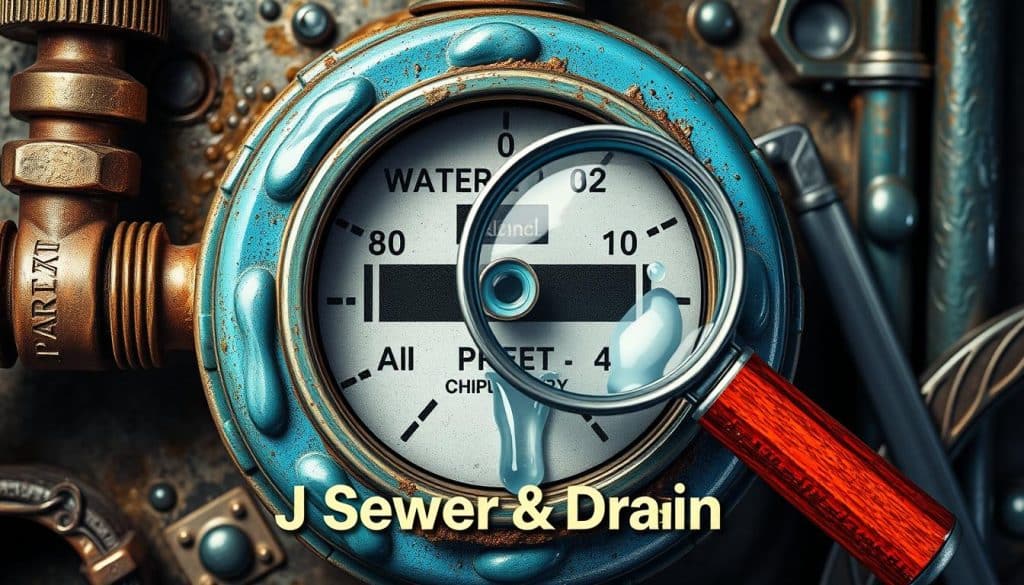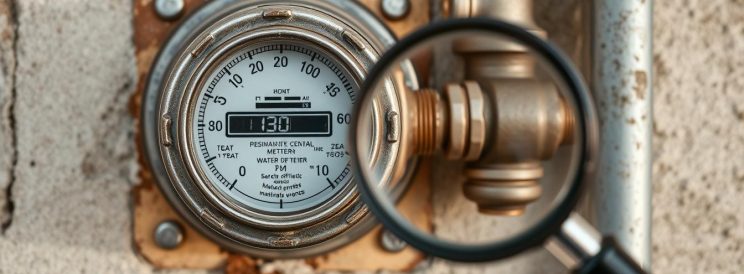Ever thought about How Can I Check if my Water Meter Indicates a Leak? Finding leaks early helps save water and money. Your water meter can be a key tool for spotting leaks.
A water meter is key for tracking water use. Knowing how to use it can help you find leaks before they cost a lot. So, it’s smart to talk to trusted experts like J Sewer & Drain Plumbing Inc.
Key Takeaways
- Regularly monitor your water meter for potential leaks.
- Turn off all water usage in your home to check the leak indicator on your meter.
- Understanding your meter readings is crucial for early detection of leaks.
- Prevent wasted resources and reduce costs by identifying leaks early.
- Avoid unexpected high water bills by keeping a close eye on your water usage.
Understanding Your Water Meter and Its Components
It’s important to know your water meter well for good water management. Knowing its parts, where it is, and how to read it helps a lot. It makes finding leaks and keeping it in good shape easier.
Location of Your Water Meter
Your water meter is usually near the curb or sidewalk. It’s in a concrete box that’s easy to open with a simple tool. This makes it easy for utility workers and homeowners to check it without going inside.
Knowing where your water meter is is the first step to check its accuracy or find leaks.

Understanding Meter Readings
Reading your water meter is simple once you find it. Most meters show how much water you’ve used in cubic feet. They also have features like a small colored triangle or asterisk for leak detection.
These signs are key to spotting leaks. If they move when no water is being used, it means you might have a leak. Checking these readings often helps keep your water use accurate and catches leaks early.
Steps to Check for Leaks Using Your Water Meter
Using a water meter to find leaks can prevent expensive water damage and high bills. Here are the key steps to keep your system leak-free. First, stop all water use before checking the meter’s leak indicator.
Turning Off All Water Usage
To start troubleshooting your water meter, turn off all water-using appliances and fixtures. This includes faucets, washing machines, dishwashers, and irrigation systems. Ensure no water is being used before moving on.
Using the Leak Indicator
After stopping all water use, check your water meter’s leak indicator. This small device, often a triangle or asterisk, is key for finding leaks. If it’s moving, it means water is still flowing, indicating a possible leak.
Regularly checking this feature is vital for troubleshooting and early leak detection. It helps you fix issues quickly and avoid bigger problems later.
Identifying the Location of the Leak
Finding where a leak is can be a big challenge. It’s important to know if it’s inside or outside your home. This helps prevent more damage. Start by turning off your home’s main water valve and watch the water meter. This method is great for finding leaks.

Determining if the Leak is Inside or Outside
First, turn off the main water valve. Then, check the water meter to see if it keeps running. If it does and the valve is off, the leak is probably outside. This could be in your irrigation system or an outdoor pipe.
If the meter doesn’t move, the leak is likely inside. It might be in pipes under your home or behind walls.
Checking Specific Areas for Leaks
After figuring out if the leak is inside or outside, look at areas that often leak. Indoors, check crawlspaces, pipes under sinks, and areas behind appliances. Outdoors, look at your irrigation system, hose bibs, and pipes.
Use the water meter to find leaks in these spots. This helps you fix them quickly. It also saves water and prevents damage to your property.
Common Signs of Water Leaks
Water leaks can show up in many ways, not always obvious. Knowing the signs can help avoid big damage and expensive fixes. Here are some common signs to look out for:
Unexpected High Water Bills
High water bills without a reason can mean a leak. If your water use hasn’t changed but your bill has, it’s a sign. Keep an eye on your bill each month to catch any issues early.
Visible Signs of Moisture
Moisture spots, water stains, and pooling water are clear signs of leaks. Even small moisture spots can mean a bigger problem. Fixing these signs quickly can stop more damage and mold.
Mushy Patches in Your Yard
Soft or mushy spots in your yard can also point to leaks. Wet or green areas where you haven’t watered might mean an underground leak. A pro can find and fix these leaks, saving your yard.


